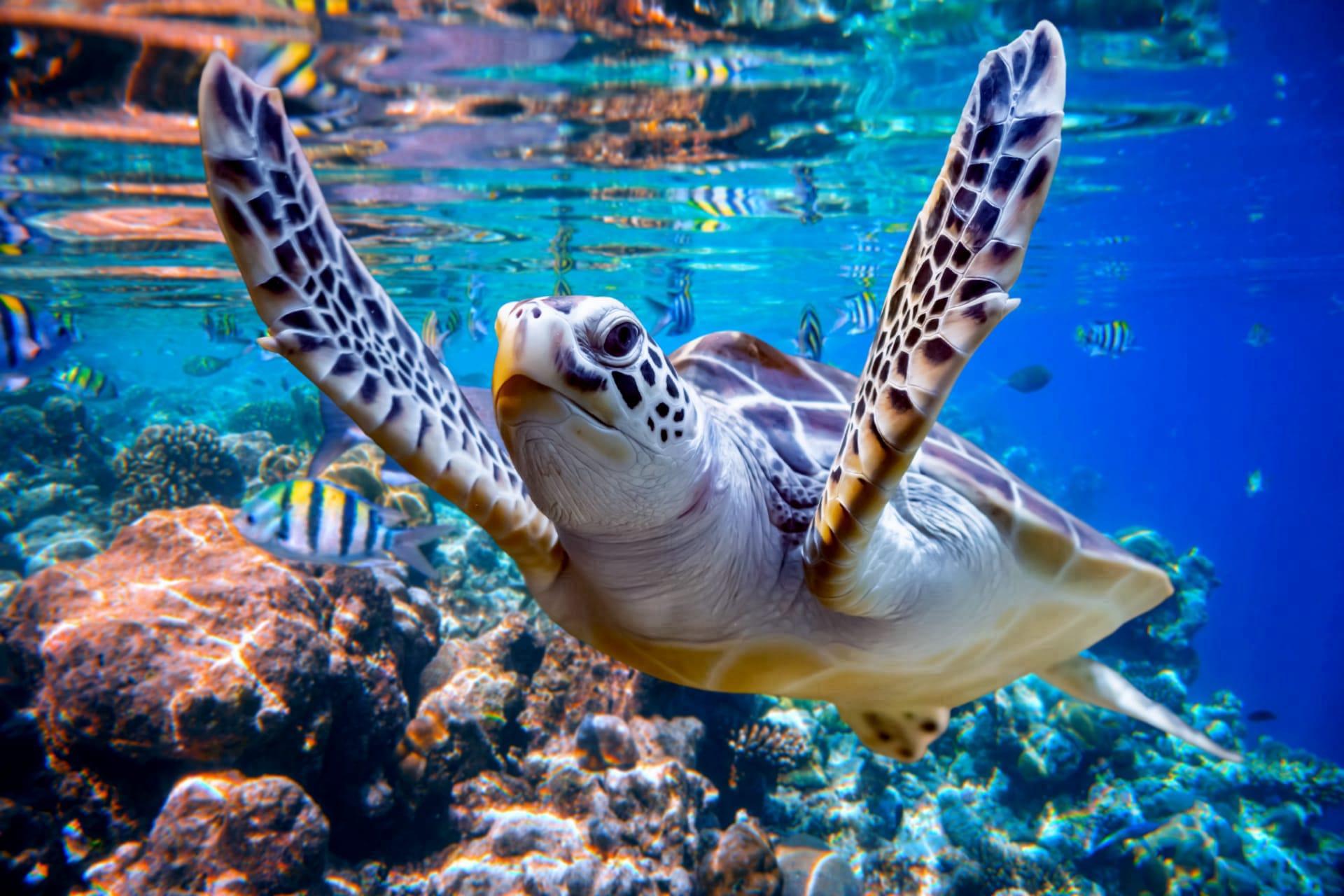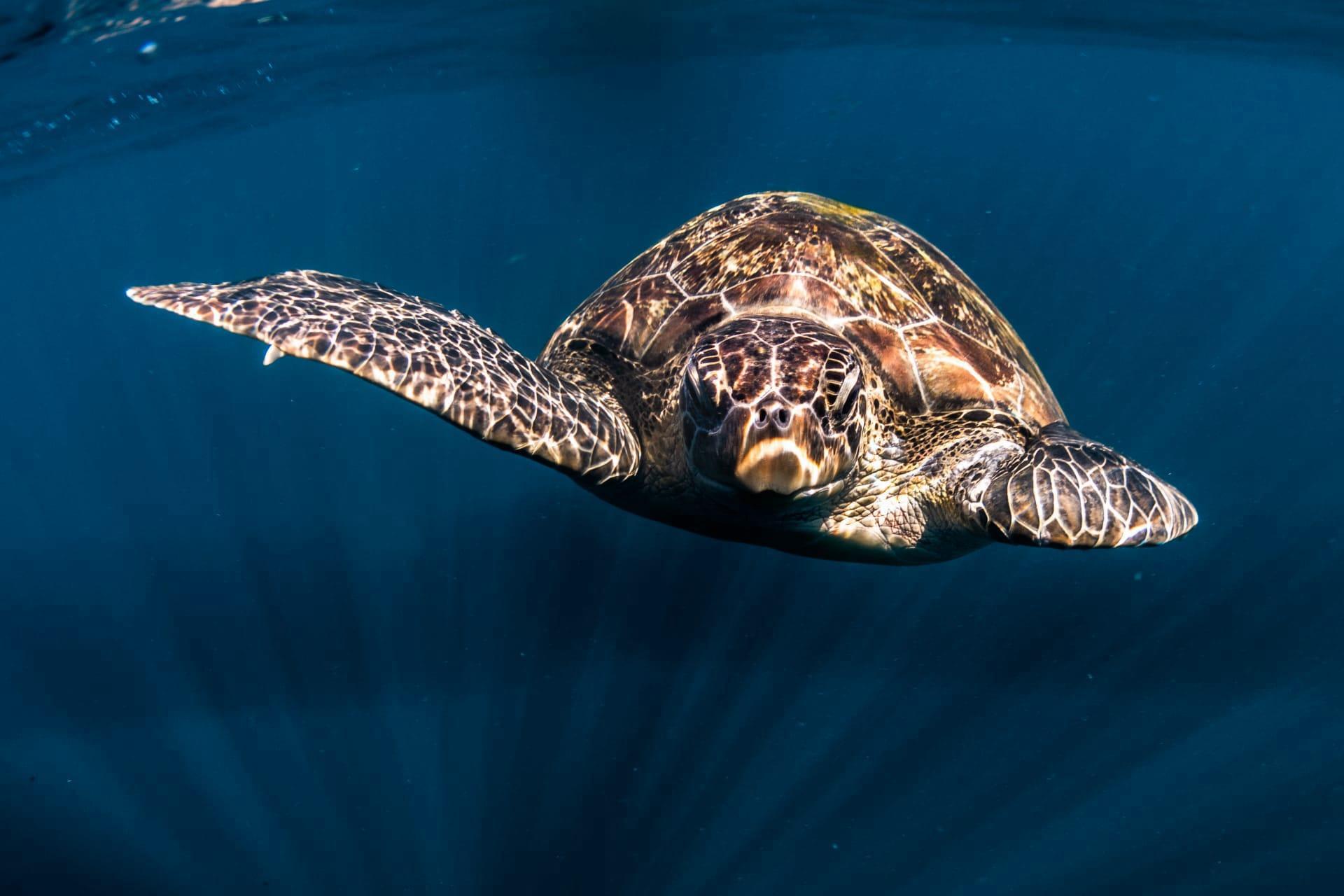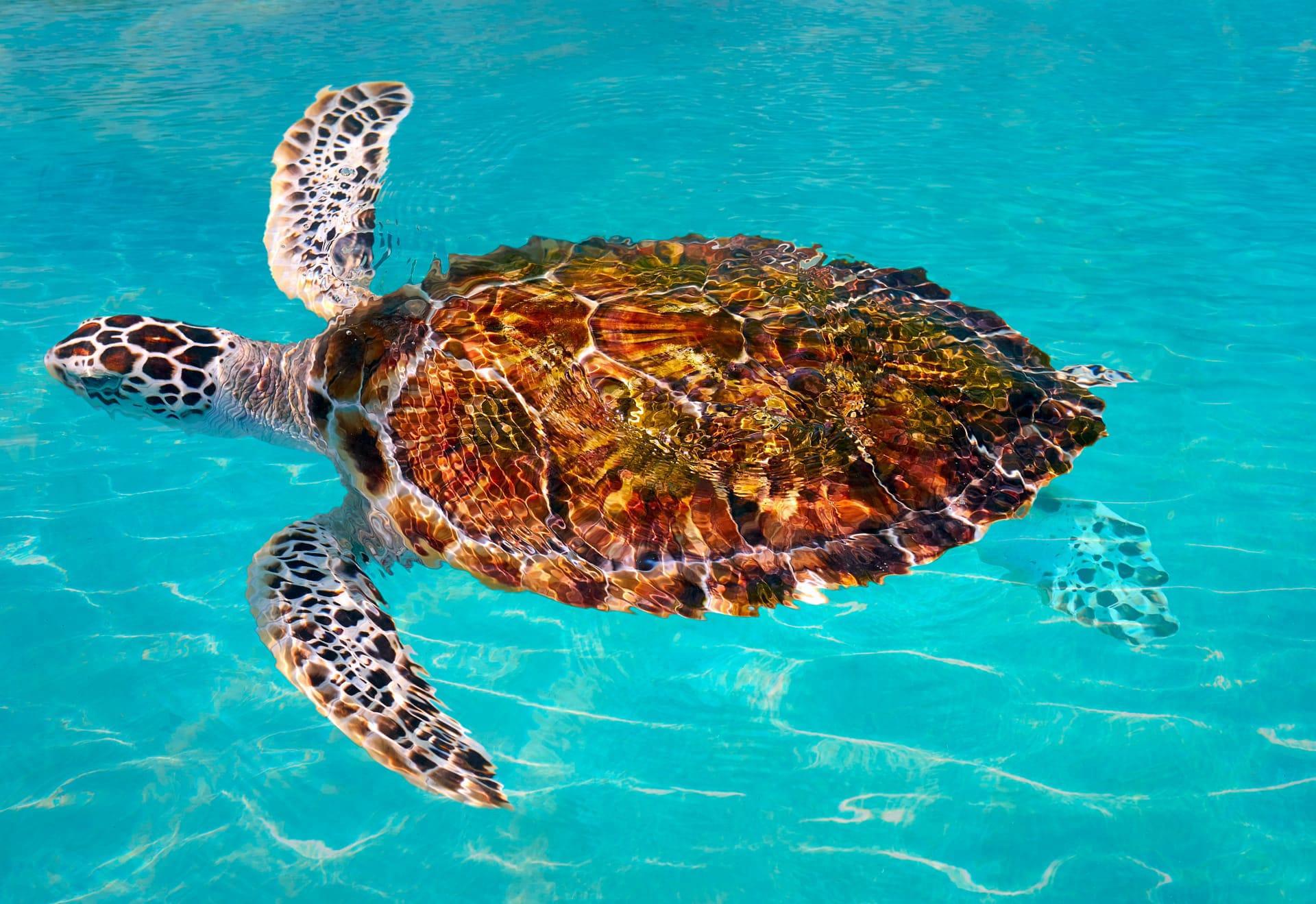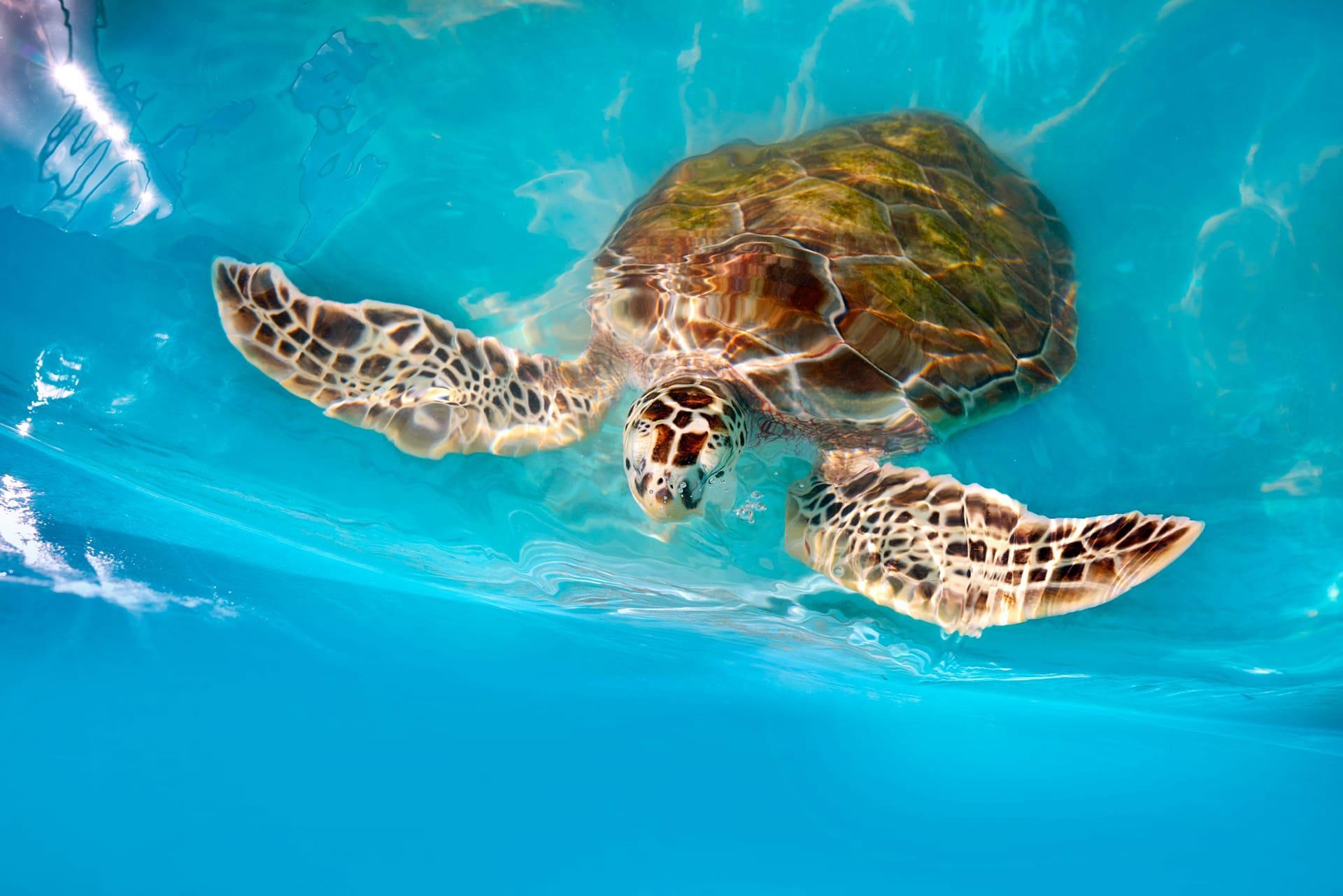1
The Hawksbill Turtle, with its distinctive hawk-like beak, is a marvel of nature, adept at navigating coral reefs. This unique beak isn't just for show; it serves a practical purpose, allowing them to extract sponges and other prey from crevices in coral reefs. The diet of hawksbill turtles primarily comprises sponges, which are toxic to most marine animals. However, these turtles have developed a natural immunity to the toxins, enabling them to feast on an otherwise dangerous meal. This diet plays a crucial role in maintaining the health of coral reefs, as sponges can overgrow and smother corals if left unchecked. Hawksbills help keep this balance, making them vital for reef ecosystems.
Another intriguing fact about Hawksbill Turtles is their contribution to beach ecosystems through their nesting behavior. Female hawksbills return to the beach where they were born to lay their eggs, a phenomenon known as natal homing. During nesting, a female can lay up to 200 eggs per nest and may nest multiple times during a season, every 2-3 years. The incubation period of these eggs is about 60 days. Interestingly, the temperature of the sand determines the sex of the hatchlings: warmer temperatures produce more females, while cooler temperatures yield more males. This temperature-dependent sex determination highlights the potential impact of climate change on their populations, as altered sand temperatures could skew sex ratios.

2
Hawksbill Turtles are known for their beautiful shells, featuring an overlapping pattern of scales that form a serrated look on the edges. These shells display a fascinating array of colors, often a combination of brown, amber, and black. Historically, their shells were highly prized for use in jewelry and ornaments, famously known as 'tortoiseshell' in the fashion industry. This demand led to extensive hunting of hawksbill turtles, significantly reducing their population. Fortunately, international laws now protect them, prohibiting the trade of their shells.
Surprisingly, Hawksbill Turtles can play a role in pharmaceutical research. Their flesh contains a compound called chelonitoxin, which is toxic to humans. However, research has shown that this compound has potential medical benefits, including possible applications in fighting cancer and bacterial infections. The study of hawksbill turtles can provide valuable insights into these compounds, potentially leading to medical breakthroughs. Despite their toxicity, these turtles continue to fascinate scientists with their unique biological properties.

3
Hawksbill Turtles possess a remarkable ability to travel long distances. They undertake extensive migrations between their feeding grounds and nesting sites, sometimes traveling thousands of kilometers. These journeys are crucial for their survival and reproduction. Satellite tracking studies have revealed these incredible migration patterns, showcasing their navigational skills and the vast distances they cover in the ocean.
Another interesting aspect of Hawksbill Turtles is their symbiotic relationship with marine algae. Young hawksbill turtles, in particular, provide a habitat for certain types of algae on their shells. This relationship benefits both the turtle and the algae; the algae receive a mobile home and access to different nutrient sources, while the turtles get an added layer of camouflage, helping them blend into their surroundings. This symbiosis is a great example of the interconnectedness of marine life and how different species can mutually benefit from each other's presence.

4
Hawksbill Turtles exhibit a unique feeding technique that sets them apart from other sea turtles. They use their narrow, pointed beaks to extract food from crevices in coral reefs. This precision allows them to feed on small invertebrates, such as sea anemones, jellyfish, and shrimp, in addition to their primary diet of sponges. This selective feeding habit helps in controlling the population of these invertebrates, maintaining the delicate balance of the reef ecosystem.
The eyesight of Hawksbill Turtles is another fascinating feature. They have remarkably good vision underwater, which is essential for navigating through complex coral reefs and spotting predators. Their eyes are well-adapted to the marine environment, with a structure that allows them to see clearly both in water and on land during nesting. This adaptation is crucial for their survival, as it aids in finding food and evading threats in their aquatic habitat, as well as navigating the beach during nesting season.

5
Did you know that Hawksbill Turtles can hold their breath for a long time? When they are resting or sleeping underwater, they can stay submerged for up to three hours without coming up for air. This ability is due to their slow metabolism and the efficient use of oxygen stored in their body. However, during active swimming or when stressed, they need to surface more frequently, approximately every few minutes, to breathe.
Last but not least, Hawksbill Turtles play a significant role in cultural folklore and conservation awareness. In many cultures, they are revered as symbols of wisdom, endurance, and navigation. Their struggle for survival against environmental challenges and human threats has inspired numerous conservation efforts worldwide. These efforts not only aim to protect the hawksbill turtle but also serve as a broader symbol for marine conservation, emphasizing the need to preserve our oceans and the diverse life they harbor.